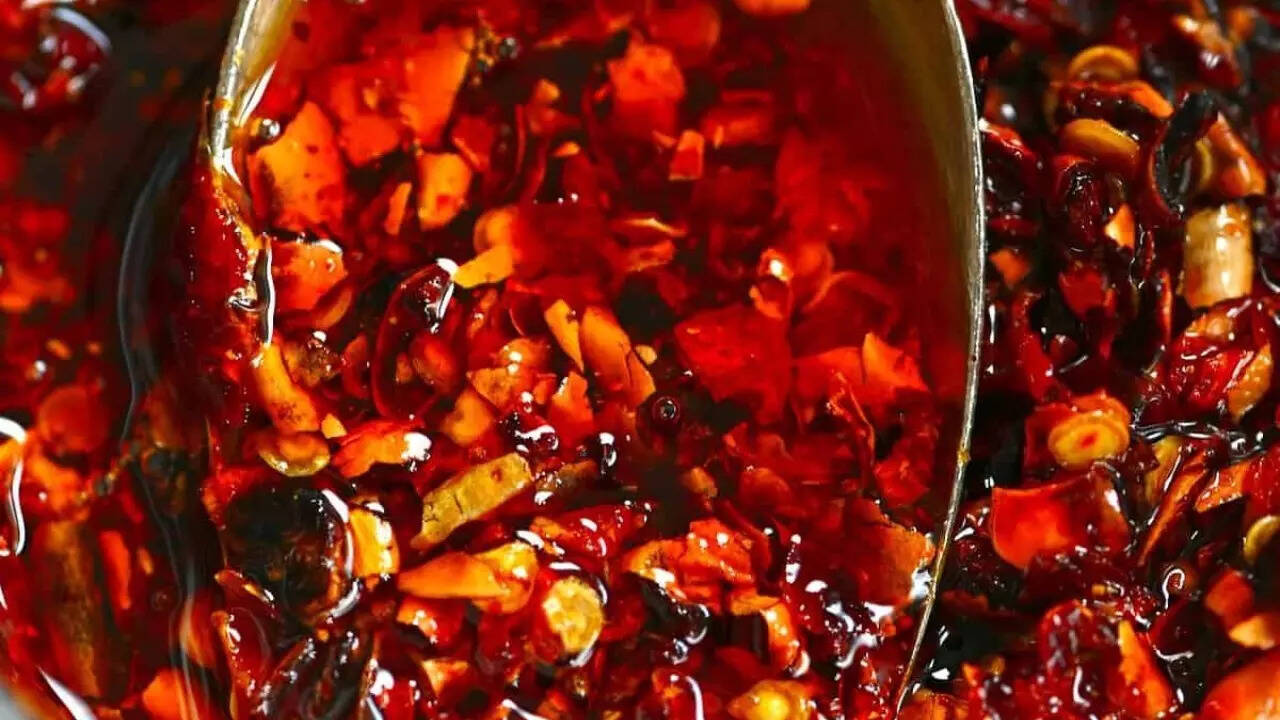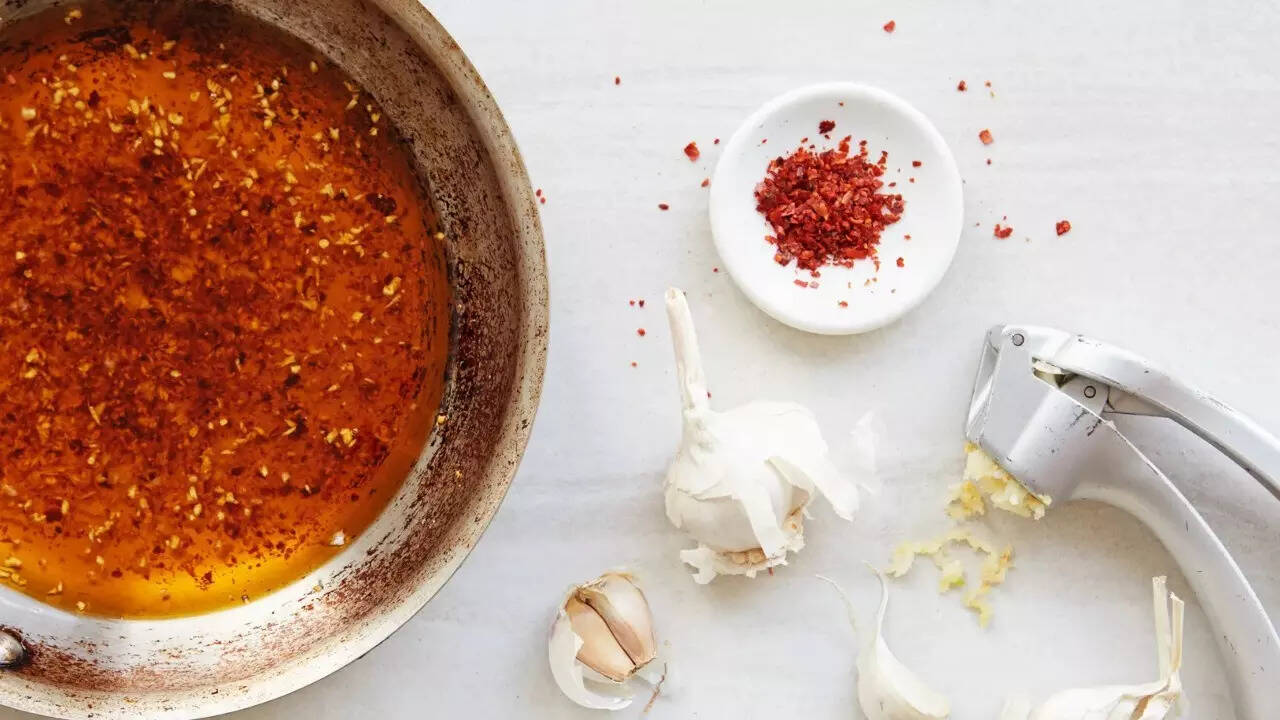
Want something to jazz up your otherwise ordinary meal? Chili oil is that elixir to elevate the taste of almost every other meal with just a spoonful! Packed with bursting flavor and aroma, chili oil isn’t just a mixture of chilis and oil; it has some more ‘secret’ ingredients that appease your taste buds like no other!Ever wished you could drizzle that dreamy, glossy chili oil, like the one restaurants serve, over your noodles, dumplings, or even eggs at home?Good news: you can!No more gatekeeping the ‘secret’ recipe of the delicious chili oil that brings the best out of both regular as well as fancy dishes. With just a few simple ingredients and minimal fuss, you can make your own restaurant-style chili oil that’s aromatic, spicy, and wildly addictive, and transforms ordinary dishes into flavor fireworks. It’s about infusing neutral oil with spices, gentle heat, and a satisfying sizzle. Whether you want to drizzle it over dumplings, stir it into noodles, or jazz up your eggs, homemade chili oil is magic in a jar. Homemade chili oil lets you steer the flavor, more garlic, more crunch, more numbing Sichuan punch, without mystery additives.Ready to level up your kitchen game? Let’s make some spicy magic happen.
What makes chili oil so special and mouth-watering?
Chili oil is a beloved condiment across countries, especially in Chinese cuisine, where it’s used for dipping, drizzling, or cooking into dishes to add bold spice and warmth. From fiery Sichuan-style, restaurant-grade red oil to zippy Italian and Mexican versions, chili oil is valued for its ability to elevate flavor with minimal effort.What sets restaurant-style versions apart is their depth: a bright red, fragrant blend of chili heat, subtle aromatics, and, sometimes, a numbing kick from Sichuan peppercorns. Typically, it’s as simple as pouring heated neutral oil (like vegetable, canola, or avocado) over chili flakes and aromatics to release their full flavor. Some versions even include crunchy bits of garlic or spices, creating the popular “chili crisp” texture.

So.. how do you make it at home?
Simple ingredients, maximum flavor
Here’s what you’ll need to create that dazzling, restaurant-grade chili oil; no fancy tools necessary!Neutral oil: Neutral oil, such as vegetable, canola, peanut, or avocado oil. These let the spices shine; olive oil is best avoided for its strong flavor.Chili flakes: Crushed chili flakes, ideally Chinese or Sichuan chilies for brighter flavor, but red pepper flakes work in a pinch.Aromatics (optional but amazing): Optional aromatics, such as Sichuan peppercorns, garlic, scallion, star anise, five-spice, bay leaf, cinnamon, sesame seeds, or even shallot, to deepen the complexity.Seasoning extras (optional): Soy sauce, vinegar, salt for depth.

Step-by-step guide to make the restaurant-style chili oil
Prep your dry mix in a heatproof bowl. chili flakes + any dry spices or aromatics you like.Heat the oil gently: Start medium, then drop to low. Aim for around 200-225 °F (100-110 °C), you’ll see small bubbles and a gentle sizzle, not smoking. If it smokes, pull back the heat.Test with a wooden chopstick or spoon: When bubbles form around it, your oil is ready.Pour the hot oil carefully over your chili mix in the bowl. You should hear a satisfying sizzle and smell a toasty, ‘not burnt’ aroma, think popcorn, not burnt toast.Stir it well to blend flavors. Let it sit and cool before storing.
Pro tips for restaurant-caliber results
Want to give it a tasty twist?Infuse aromatics first. As chefs at The Woks of Life explain, begin by infusing oil with spices like star anise, bay leaves, cinnamon stick, or Sichuan peppercorns for deeper flavor layers.Watch your oil temperature. Don’t rush; too hot oil burns spices and tastes bitter. Test with a few flakes or use a thermometer if available.Customize. Customize. Customize! Toss in garlic powder, five-spice, onion powder, or even vinegar for your own spin.Boost color and aroma. Use Korean gochugaru or Sichuan peppercorns for sweeter, fruitier tones and a numbing quality.Layer your pour. Some cooks tip in half the oil, wait for it to cool slightly, then add the rest; this avoids burning while giving more depth.Add a splash of soy sauce, vinegar, or even black vinegar. These are all optional, but they add tang and umami.Store smart. Let your chili oil cool completely, then seal in a clean, airtight jar. Refrigeration can help it last for months; just use a clean spoon each time to avoid spoilage.And there it is! Your restaurant-worthy home-made chili oil is ready to pour! Drizzle over dumplings, noodles, fried rice, eggs, salads, and even sweet foods for a surprising kick!





